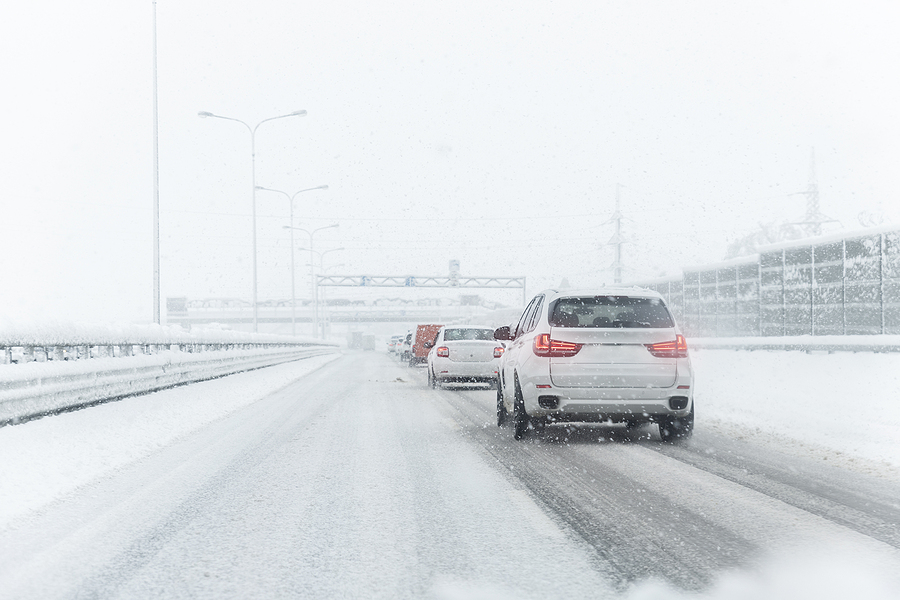
- Snow and ice make roads slippery, reducing traction and increasing the risk of skidding and accidents, particularly on untreated or poorly plowed roads.
- Reduced visibility due to snow accumulation impairs a driver’s ability to see, raising the risk of collisions.
- Winter weather not only brings physical hazards but also psychological challenges for drivers.
- You can take several steps to prove someone else is to blame for an accident during winter.
- It would help if you took the necessary precautions to prepare for driving in winter.
Winter car accidents are, unfortunately, part of living in Minnesota. From 2016-2020, officials attributed nearly 80,000 crashes to snowy or icy roads. These accidents injured more than 19,000 people and, tragically, led to nearly 200 deaths.
Many Minnesotans dread getting behind the wheel whenever cold weather starts to set in. But if you’re aware of the hazards we face each winter, you’ll be better prepared to deal with them. The following is a look at those hazards and the effect they can have on drivers.
If you’re ever in an accident caused by someone else – no matter what time of the year it happens – the attorneys with Sand Law will be ready to help. We’ll work to ensure you get every dollar you have coming. Please don’t hesitate to schedule a free consultation by calling 651-291-7263 or contacting us online.
Hazards that Increase the Risk of Winter Car Accidents in Minnesota
As winter takes hold in Minnesota, the state’s roadways undergo a profound transformation. This transformation creates a series of unique hazards that significantly elevate the risk of car accidents. These seasonal changes require drivers to exercise heightened caution and adapt their behavior to the challenging conditions. Here are the key factors contributing to the increased risk of winter car accidents in Minnesota:
Snow and Ice
The arrival of winter brings snowfall and freezing temperatures, leading to the development of icy road surfaces. These icy roads significantly reduce traction, making it more difficult for drivers to maintain control of their vehicles. This diminished grip on the road can result in skidding, sliding, and an increased likelihood of accidents.
Reduced Visibility
Winter weather, characterized by snow and freezing rain, often reduces visibility. Snow accumulation on windshields and road surfaces impairs a driver’s ability to see obstacles, other vehicles, and road signs. When violent winds combine with snow, motorists may not be able to see 100 yards in front of them.
This limited visibility creates a dangerous environment where the risk of collisions escalates, especially when drivers cannot anticipate obstacles or changes in road conditions.
Icy Patches
The freeze-thaw cycle typical during winter can produce treacherous patches of ice on roadways. These patches are notorious for their unpredictability, making it challenging for drivers to foresee when their vehicles may suddenly lose traction. The slippery nature of these icy patches creates a significant hazard, particularly on curves and hills where maintaining control is essential.
Winter Weather Makes Nervous & Irritable Drivers
The impact of winter weather on driving safety extends beyond physical hazards and road conditions. The psychological aspects of this season can also contribute to an increased risk of car accidents.
The unpredictability of winter driving conditions, especially during snowstorms or icy conditions, creates tension and stress in drivers. These emotional responses can impair their decision-making abilities and reaction times.
In addition, nervous drivers may instinctively follow other vehicles too closely. This behavior increases the chances of rear-end collisions, particularly when road conditions demand extended stopping distances.
How to Prove Your Winter Car Accident Was Caused by Negligence
If you find yourself in a winter car accident and believe it was someone else’s fault, you must build a solid case to prove negligence. Here are more details on the steps you can take:
Gather Evidence
In the aftermath of the accident, ensure you collect as much evidence as possible. Take photographs of the accident scene, vehicle damage, and road signs or traffic signals. These images can serve as decisive evidence to support your claim that another driver was at fault. It’s also crucial to obtain a copy of the police report, as it will provide an official account of the incident.
Document Road Conditions
Weather and road conditions play a significant role in winter accidents. Note the exact weather conditions during the accident, such as snow, ice, or freezing rain. Additionally, document the state of the road, whether it was plowed, salted, or slippery. All these details can be crucial in demonstrating that the other party was negligent in adjusting their driving to the conditions.
Identify Witnesses
Talk to anyone who might have witnessed the accident. Eyewitness accounts can offer an impartial perspective on what occurred and help substantiate your version of events. Be sure to collect their contact information so your attorney can reach out to them for statements or testimony.
Steps You Can Take to Reduce Your Winter Car Accident Risk
Preventing winter car accidents begins with proactive steps to reduce your risk. Here’s a quick look at some of the measures you can take:
Prepare Your Vehicle for Cold Weather
As winter approaches, conduct a thorough check of your vehicle. Inspect your tires to ensure they have enough tread depth to keep your car stable on slick roads. Make sure your brakes are in good condition, and check all fluid levels. You should also keep an emergency kit in your vehicle at all times. It should contain blankets, non-perishable food, and a flashlight.
Learn How to Drive Defensively
Defensive driving involves being acutely aware of your surroundings and anticipating potential hazards. Keep a safe distance from the vehicle in front of you, especially in icy or snowy conditions, as your stopping distance increases.
Also, reduce your speed to match the road conditions and always be on the lookout for other drivers who may not adjust their driving to the weather. Speeding is another dangerous form of aggressive driving. It played a role in nearly 395 traffic deaths in 2020. While speeding always presents a high level of risk, when someone does it on icy or snowy roads, that’s a recipe for disaster.
Get Comfortable Driving in the Snow
If you’re not accustomed to driving in snowy conditions, practice in a safe, empty parking lot or quiet side streets before facing heavy traffic. This will help you become more familiar with how your car handles slippery surfaces and boost your confidence when navigating winter roads.
Contact Sand Law if You’ve Been Involved in a Winter Car Accident
Sand Law attorneys have extensive experience helping victims of car accidents obtain maximum compensation. We’re standing by to do the same for you. Please get in touch as soon as you can by using our online form or calling 651-291-7263 for a free review of your case.
Frequently Asked Questions
Are there more car accidents in summer or winter?
Car accidents can occur throughout the year, but the risk tends to increase during the winter months. This is primarily due to icy and slippery roads, reduced visibility caused by snow and fog, and challenging weather conditions.
Do people drive worse in the winter?
Winter conditions can make driving more difficult because of reduced traction and decreased visibility. The key to safer winter driving is adapting to these conditions by driving more cautiously, using proper winter tires, and staying alert. Driving responsibly can mitigate the increased risk.
Why do cars break down more in the winter?
Winter can be harsh on vehicles because cold temperatures can affect various components. For example, cold weather can cause a car’s battery to lose power more quickly, decrease tire pressure, and make it harder for engines to start. Regular vehicle maintenance and winter preparations can help prevent breakdowns during winter.

